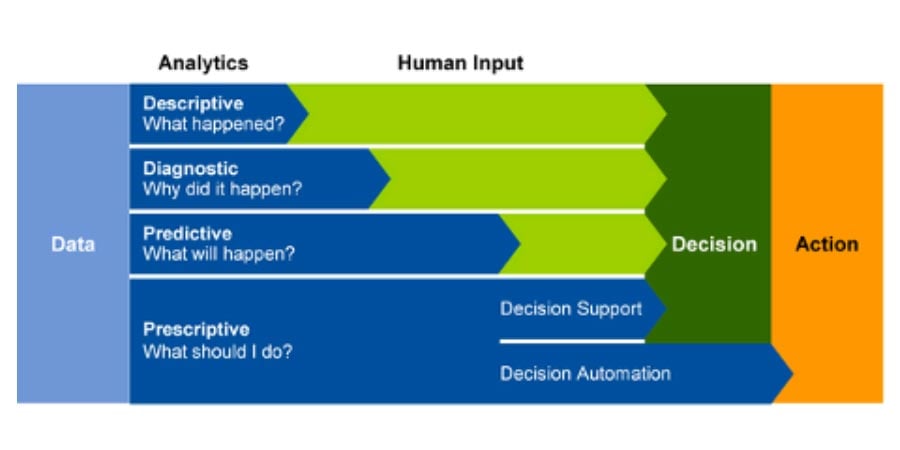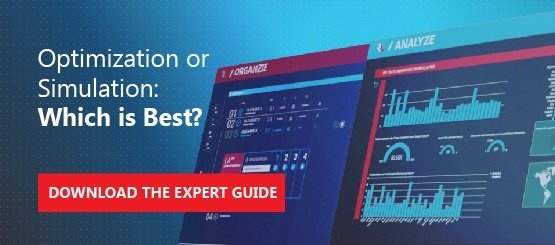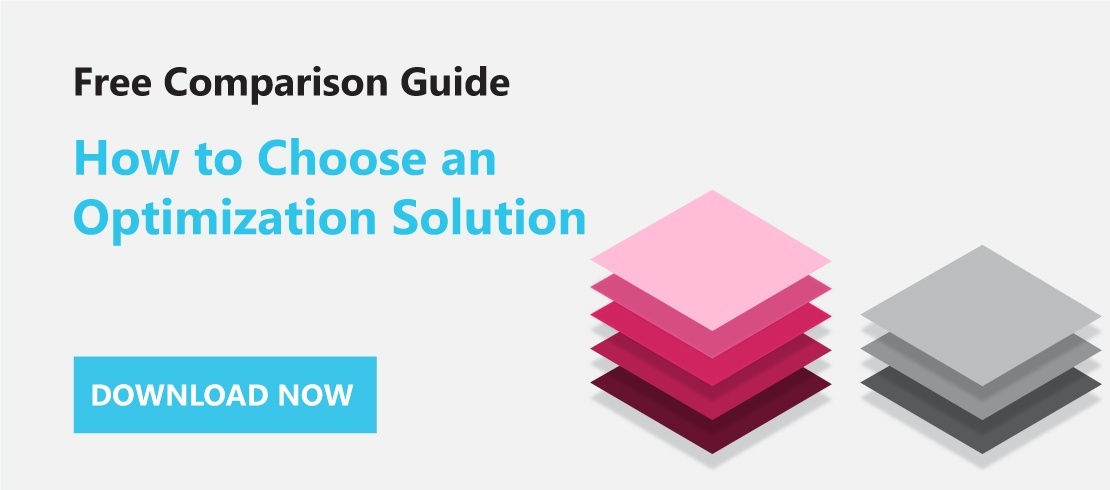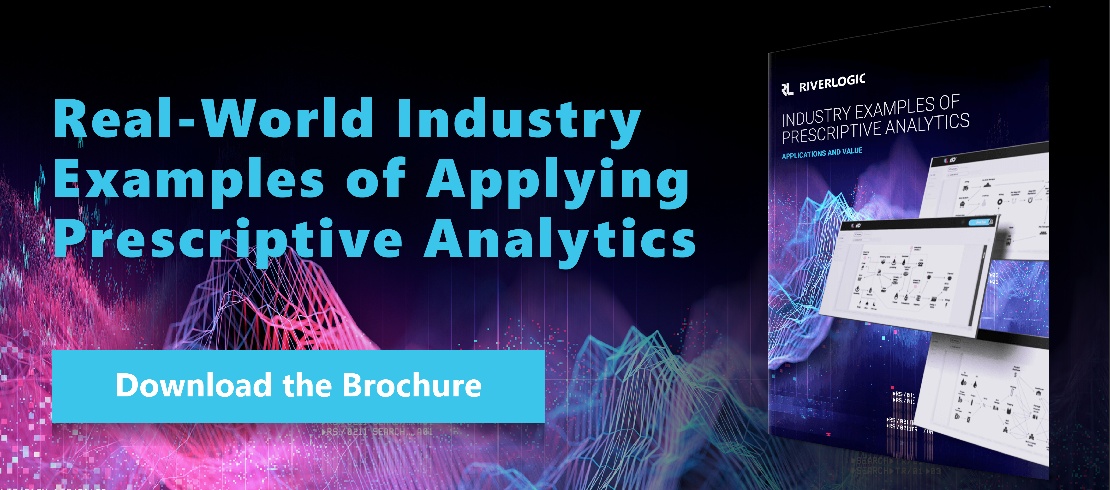When Gartner released their 2017 Planning Guide for Data and Analytics, they defined an analytics hierarchy that highlighted the different types of business analytics. At the bottom are descriptive and diagnostic analytics that identify what happened and why. In the middle is predictive analytics that predicts what will happen in the future. At the top is prescriptive analytics which uses the information obtained from other forms of analytics to determine the decisions companies should make.

Interest in this form of analytics is growing as companies look for better ways to deal with market uncertainty, increased competition and rapid change. As a result, Gartner forecasts the prescriptive analytics market will grow at a CAGR of 20.6 percent through to 2022.
Definition of Prescriptive Analytics
IBM defined prescriptive analytics as a set of mathematical techniques and algorithms that computationally determine a set of high-value actions and decisions, given a complex set of objective requirements and constraints, with the goal of improving business performance.
While still valid, this definition can be expanded to include reference to the use of linear, mixed integer and constraint programming techniques, along with heuristic algorithms and neural networks, to analyze structured and unstructured data to minimize or maximize an objective such as profit, revenue or sales.
In addition, the key objective of prescriptive analytics is to determine the best plan or solution to a given set of circumstances. To be clear, this doesn’t mean to identify a range of beneficial solutions, nor one or two alternatives, but the single best solution or decision that maximizes the objective function.

Different Prescriptive Analytics Approaches
It’s natural to try to find the best approach to solving any problem, and prescriptive analytics software is divided into two broad categories. On the one hand, there are those offering modeling solutions based on business rules, and on the other, those that use linear programming techniques.
Business Rules (Heuristics)
Rules-based modeling, known as heuristics, is good for finding solutions quickly to complex problems. Heuristics are based on a set of predefined rules approached sequentially. Solutions may involve the use of decision trees, statistics and algorithms to determine answers. Heuristics are good for narrowly-defined problems, especially those associated with operational decisions.
Benefits of heuristics
The logical approach means heuristics work well where there are limited options, such as in production planning or with inventory management. Heuristics are relatively easy to understand and configure and are often used in decision automation software providing immediate solutions.
Disadvantage of heuristics
While logical, heuristics can’t provide answers which haven’t been predetermined. This means that heuristics cannot analyze all possible scenarios, a particular limitation of Excel-based scenario analysis. It’s possible answers may not be optimal, nor always feasible. Rules need constant maintenance to reflect changes, and it’s difficult to account for constraints.
Linear Programming (Optimization Modeling)
The goal of prescriptive analytics linear programming is to optimize a solution. Typically, the first step is to define a model that represents business reality, including all limitations and constraints. A key step in the process is model validation to ensure it reflects business realities. Using complex linear programming and algorithms, the model solves for one or more objective function, finding the best possible solution. Optimization modeling can handle numerous constraints and trade-offs to determine the best combination of feasible business activities to optimize the objective function.

Benefits of optimization modeling
Optimization modeling is a proven technique. Early examples of successful optimization modeling go back over a century. It provides an optimal answer in terms of any specified objective function. It works well in complex business situations where there are no clear solutions. There are numerous established software vendors.
Disadvantages of optimization modeling
Optimization modeling is slower than heuristics. Model preparation is tedious, particularly with 3rd and 4th generation programming languages that require advanced programming skills. Complex scenarios may take several hours to run, although this is less of a problem with 5th generation software packages. It may be difficult to understand how the optimization works and users may be dependent on specialists for changes. However, with 5th-generation optimization technology, there is no requirement for code or programming knowledge. Thus, companies can get the speed, agility, and flexibility that a rules-based system offers, without sacrificing performance.
Prescriptive Analytics Software
As demand for prescriptive analytics has grown, vendors have developed two different technologies, namely prescriptive analytics packages and prescriptive analytics platforms.
Prescriptive Analytics Packages
These are standalone packages targeted at specific, well-defined applications. Examples include airline ticketing, car hire, sales, marketing and S&OP. Packages may be rules- or optimization-based. In most instances, all that’s required to get up and running is configuration such as setting up user accounts, security and connection to data sources. Minimal customization is required.
Advantages of packages
Especially with cloud-based packages, configuration is fast and setup can be accomplished within a few days. Packages work well with standardized applications, especially in large organizations with many branches. Solutions require minimal IT involvement.
Drawbacks of packaged solutions
Solutions may not perfectly match applications, possibly requiring organizations to change their work practices to match how the software works. There aren’t many applications for small industries, nor for complex problems. Users are reliant on vendors for updates and software fixes.
Optimization Platforms
These comprise of two parts, the modeling platform and an optimization solver. They’re sometimes sold as separate solutions, although in other instances, vendors supply a complete platform comprising both functions. In both instances, the user must research, design and develop the model.
Third and fourth generation optimization modeling platforms are based on high-level programming languages such as Python, Ruby and SQL, and they require a degree of expertise to write algorithms that define the model and also to validate the model. Fifth generation modeling software that uses a drag-and-drop approach to create a constraint-based model is simpler and easy to use.
Advantages of optimization platforms
Optimization platforms can solve almost any analytical problem. An optimization platform allows users to create highly complex models that accurately represent the business, industry or problem to be solved. They work well for specialized applications and complex problems. The technology is mature and there’s good vendor support. Drag-and-drop 5th generation programming languages are easy to use, are interpretable by non-data scientists, and don’t require advanced programming skills to prepare. They’re able to have a greater impact on value without sacrificing the need for flexibility, agility, and user-friendly interfaces.
Disadvantages of optimization platforms
Apart from 5th generation languages, an OR expert is needed to write the complex math and algorithms to define the model and solver. In most instances, it’s also necessary to develop end-user interfaces, and each solution is bespoke.

Problems That Can Be Solved by Prescriptive Analytics
Prescriptive analytics differs from other forms of analytics in that it’s able to determine the right decisions to take to maximize an organization’s key objectives. Whether it’s to improve profit, or for operational planning or to optimize a function, prescriptive analytics provides specific, measurable answers to these questions. Prescriptive analytics is the right tool for any complex situation where there are so many variables and possible outcomes that it is otherwise impossible to determine the right course of action.
There are many examples of prescriptive analytics being used to improve operations and profitability. Here at River Logic, we work with all ranges of industries and company sizes to deploy prescriptive analytics solutions, like Food and Beverage or Wood Products manufacturers.
One typical case demonstrates how a pulp and paper manufacturer running four paper mills used prescriptive analytics to increase production volume by 65 thousand tons while increasing operating income. Another involved a manufacturer of wood products for residential and construction markets with 14 manufacturing facilities that needed to optimize manufacturing performance in the face of increased regulation. Using prescriptive analytics, Cox Industries was able to increase forecast accuracy, identify ways to reduce internal costs and increase profitability.
Prescriptive analytics is a value tool for any business seeking to improve operational performance. While model development requires commitment and a degree of investment, the results show that, in most instances, the financial benefits significantly exceed implementation costs. It’s for these reasons that Gartner and others forecast widespread growth of prescriptive analytics over the next few years.







